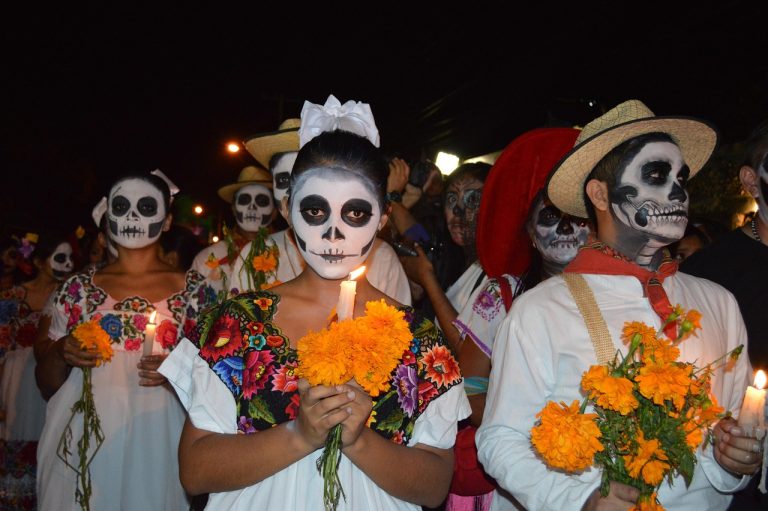Mexico Guide
From the bustling, historic heart of Mexico City to the turquoise waters of the Caribbean, Mexico is a symphony of flavor, color, and tradition. It is a land where ancient civilizations—the Maya, the Aztec, and the Olmec—left an indelible mark, where colonial cities shine with Baroque splendor, and where every meal is a celebration. Mexico offers a vibrant blend of stunning natural diversity, world-class beaches, and a profound, captivating culture that embraces life, death, and everything in between.
History
Mexico’s history is a profound journey spanning millennia. It begins in Mesoamerica, where advanced civilizations flourished, notably the Olmec, Teotihuacan, Maya, and the powerful Aztec empire, which built the magnificent capital of Tenochtitlán.
The arrival of the Spanish in 1519 and the subsequent conquest under Hernán Cortés ushered in three centuries of colonial rule, known as New Spain. This era fused indigenous traditions with European Catholicism and architecture. Mexico finally achieved independence in 1821, followed by periods of turbulence, including the Mexican-American War and the Mexican Revolution (1910–1920), which shaped the modern republic. Today, Mexico’s identity is defined by the resilience and creativity that emerged from this rich, often tumultuous, history.
Geography & Regions
Mexico is a vast, geographically diverse nation that connects North and Central America.
- Central Mexico – The cultural and political core, home to Mexico City, the ancient ruins of Teotihuacan, and the colonial cities of Puebla and Guanajuato.
- Yucatán Peninsula – Famous for its flat geography, stunning Caribbean beaches (Cancún, Tulum), vast jungle, and iconic Maya archaeological sites like Chichén Itzá and Uxmal.
- Southern Mexico (Oaxaca & Chiapas) – A region rich in indigenous culture, dramatic mountains, dense rainforests, and world-renowned culinary traditions.
- Pacific Coast – Stretches from the resort towns of Puerto Vallarta and Acapulco to the rugged surfing beaches of Oaxaca.
- Baja California Peninsula – A unique, arid landscape perfect for whale watching, diving, and desert exploration.
Culture
Mexican culture is a powerful and passionate tapestry woven from indigenous roots, Spanish colonial heritage, and modern innovation.
Religion is dominated by Catholicism, which deeply influences daily life and traditions. The most famous cultural celebration is Día de Muertos (Day of the Dead), where families honor deceased loved ones with vibrant altars, transforming remembrance into a joyful celebration. Other major festivals include Grito de Dolores (Independence Day) and Cinco de Mayo.
Music is epitomized by the energetic sounds of Mariachi bands and the traditional Marimba of the south. Cuisine is a designated UNESCO Intangible Cultural Heritage, celebrated worldwide for its complexity. From street tacos, enchiladas, and tamales to the rich, slow-cooked complexity of mole, Mexican food is endlessly diverse. Don’t forget the national drinks: Tequila and its smokier cousin, Mezcal.
When to Visit
The best time to visit Mexico is during the dry season, from October to May.
- Peak Season (Dec–Apr): Ideal weather across most of the country, with warm days and cool nights, but higher prices and larger crowds, especially on the coasts.
- Shoulder Season (Oct–Nov & May): Excellent months offering pleasant weather and lower crowds, perfect for cultural touring in the interior.
- Wet Season (Jun–Sep): Characterized by short, heavy afternoon rains, especially in the central and southern regions. This is the low season, but be aware of the official Atlantic Hurricane Season (June 1 – November 30), which primarily impacts the Caribbean coast.
Suggested Itinerary
This itinerary focuses on Mexico’s history, gastronomy, and vibrant city life.
| Days | Region | Highlights |
| Days 1–3 | Mexico City | Explore the Zócalo, the National Museum of Anthropology, and take a day trip to the colossal Pyramids of Teotihuacan. |
| Days 4–6 | Oaxaca | Dive into Mexico’s culinary capital. Visit the bustling Benito Juárez Market, explore the ancient Zapotec ruins of Monte Albán, and sample mezcal. |
| Days 7–9 | Puebla & Cholula | Discover stunning Baroque architecture, sample mole poblano, and climb the Great Pyramid of Cholula (the largest pyramid by volume in the world). |
| Days 10–14 | Yucatán Peninsula | Conclude with relaxation and history. Tour the Maya city of Chichén Itzá, swim in a Cenote (natural sinkhole), and relax on the beaches of Tulum or Playa del Carmen. |
(Alternative routes include the Pacific Coast for surfing and colonial city exploration, or a deep dive into Chiapas for nature reserves and indigenous villages.)
Travel Tips
- Learn a Little Spanish: While English is spoken in tourist hubs, knowing basic Spanish will significantly enrich your experience, especially in non-coastal areas.
- Embrace Street Food: Mexican street food is generally safe, delicious, and cheap. Look for stalls with long lines of locals—a sign of quality and freshness.
- Cash is King: While major hotels and restaurants accept cards, many small shops, markets, and street vendors are cash-only (Mexican Pesos, MXN).
- Stay Hydrated: Always drink bottled or purified water, and be cautious about ice cubes unless specified as purified.
- Tip (Propina): Tipping is customary in Mexico. Plan to tip 10–15% in restaurants and a small amount for taxis, bellhops, and tour guides.

